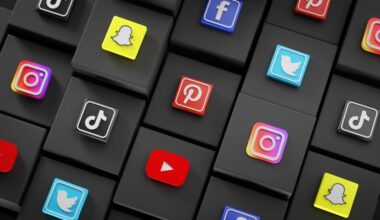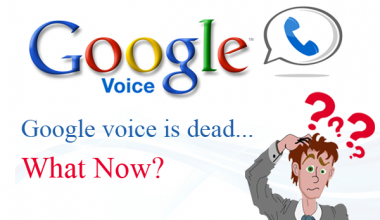If the much-promoted iPad is going to be a mainstream consumer hit, Apple is going to have to change the minds of people like Jon Byron.
Mr. Byron, a 54-year-old banker from Connecticut, emerged from the Apple store on Fifth Avenue in Manhattan this week with a new business card scanner and serious doubts about the tablet computer trend.
“I can do everything on my MacBook Pro, cellphone and BlackBerry,” Mr. Byron said. “I don’t need any more devices. I already have six phone numbers and enough things to plug in at night.”
For all the exuberance surrounding Apple’s new gadget — and the circuslike atmosphere at Apple stores that is sure to accompany its debut on Saturday — sentiments like that are, for Apple at least, uncomfortably common.
Many consumers do not understand the device’s purpose, who would want to pay $500 or more for it and why anyone would need another gadget on top of a computer and smartphone. After all, phones are performing an ever-expanding range of functions, as Apple points out in its many iPhone commercials.
“The first five million will be sold in a heartbeat,” said Guy Kawasaki, a Silicon Valley entrepreneur who was a marketing executive at Apple in the 1980s. “But let’s see: you can’t make a phone call with it, you can’t take a picture with it, and you have to buy content that before now you were not willing to pay for. That seems tough to me.”
Apple and other technology companies that are introducing a wave of touch-screen tablets face an ambitious challenge. The industry wants to create a market for a new type of device that most people do not really need — or do not yet know they need.
Tablets are intended to allow people to watch video, browse the Web, play video games and read books, magazines and newspapers everywhere they go without the bulky inconveniences of a full-fledged laptop.
The people who have already ordered an iPad or will show up at the Apple store on Saturday “are technophiles — the phrase ‘leading-edge technology’ sends goosebumps all over their skin,” said Eitan Muller, a professor of high-tech marketing at New York University’s Stern School of Business.
But those people make up only 16 percent of the total potential market for the iPad, Professor Muller said. “The main market is made up of pragmatists, and the same phrase sends them into convulsions.”
Technology research firms are trying to measure this skepticism ahead of the iPad’s introduction. One firm, NPD, found in a study that 18 percent of consumers expressed interest in owning an iPad.
Interviews with a range of people over the last week underscored this uncertainty. There was a subtle sense of frustration among some consumers that they were being asked to bring yet another expensive device into lives already cluttered with finger-smudged screens and tangled power cords.
“I just want to know, what is this supposed to be used for?” said Ebony White, 21, a child care worker in San Francisco who has discussed the iPad with her friends, all of whom have decided to pass. “If I was going to spend that much money to buy something, it would just be a computer, because it costs just as much and it can do more things.”
She added: “Where am I supposed to use it? Am I supposed to use it on the bus — and get robbed?”
John Morgan, 48, who was visiting New York from Rockville, Md., with his family last week, has already pledged his devotion to Steve Jobs & Company. “We’re a six-iPod family,” he said. But he vowed they would remain a zero-iPad family: “It’s too expensive.”
His son Alex, 9, added that the family already had an iPod Touch, “so it’s not like we need one.”
Karla Villarreal, 28, an entertainment and business promoter from Queens, is also an unabashed Apple fan, and dug through her bag for her iPod Nano, iPod Touch and BlackBerry on the New York subway this week. But those devices, she said, leave little room in her technology budget — or her purse — for a new tablet computer. “It’s going to be really hard, especially during this recession. So, no more devices for me,” she said.
It may be too early to gauge consumer interest in the iPad. Developers have not yet had time to prepare a variety of applications for the device, and Apple has not yet done much of what it perhaps does best: advertise.
Gene Munster, an analyst with Piper Jaffray, estimates that Apple will spend $515 million on advertising this year and devote $77 million of that, or 15 percent, to promoting the iPad. If its commercial that first appeared during the Academy Awards broadcast is any guide, those ads will not highlight any one aspect of the device, but will aim to convey a general feeling of exciting possibility.
“Apple will position this like they positioned the iPhone: as a fun entertainment machine,” said Don Norman, a professor at Northwestern University who has predicted the proliferation of multiple screens and devices. “Their ads will make people feel like using the machine, even if what they’re doing with it is beside the point.”
In some respects, time is on Apple’s side. The price of the iPad will inevitably come down, and developers will produce inventive applications for the device, creating new uses for it as they did for the iPhone.
The Apple acolytes will perform much of Apple’s hardest work for it: toting the iPad into subways and stores, where its presence could have the same head-turning impact that the iPod, with its white ear buds, delivered eight years ago.
“It’s a want, as opposed to a need,” said one of those Apple fans, Ryan Kenney, 29, describing his nascent desire for the iPad in New York this week. “You don’t really need it. Between a smartphone and a laptop, that covers all the bases.”
“But I’d wear their underwear if they made it.”
Resource:
http://www.businessweek.com/technology/content/apr2010/tc2010041_600018.htm




Comments are closed.